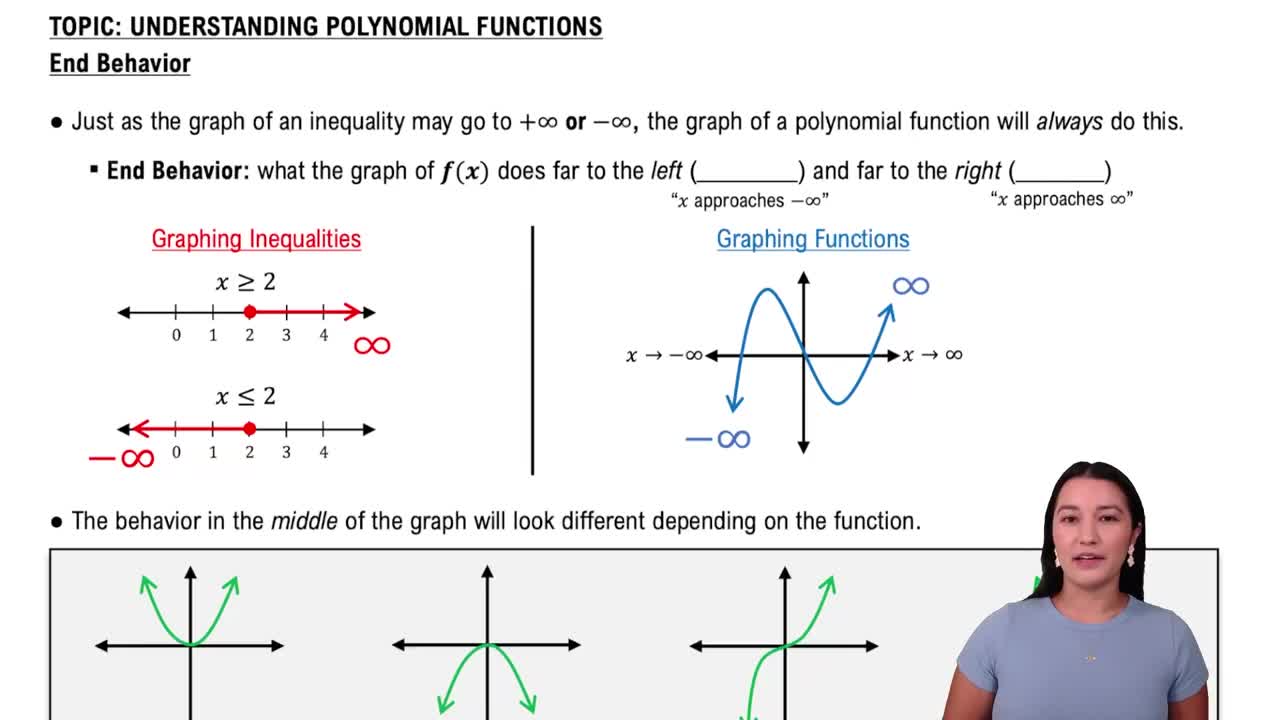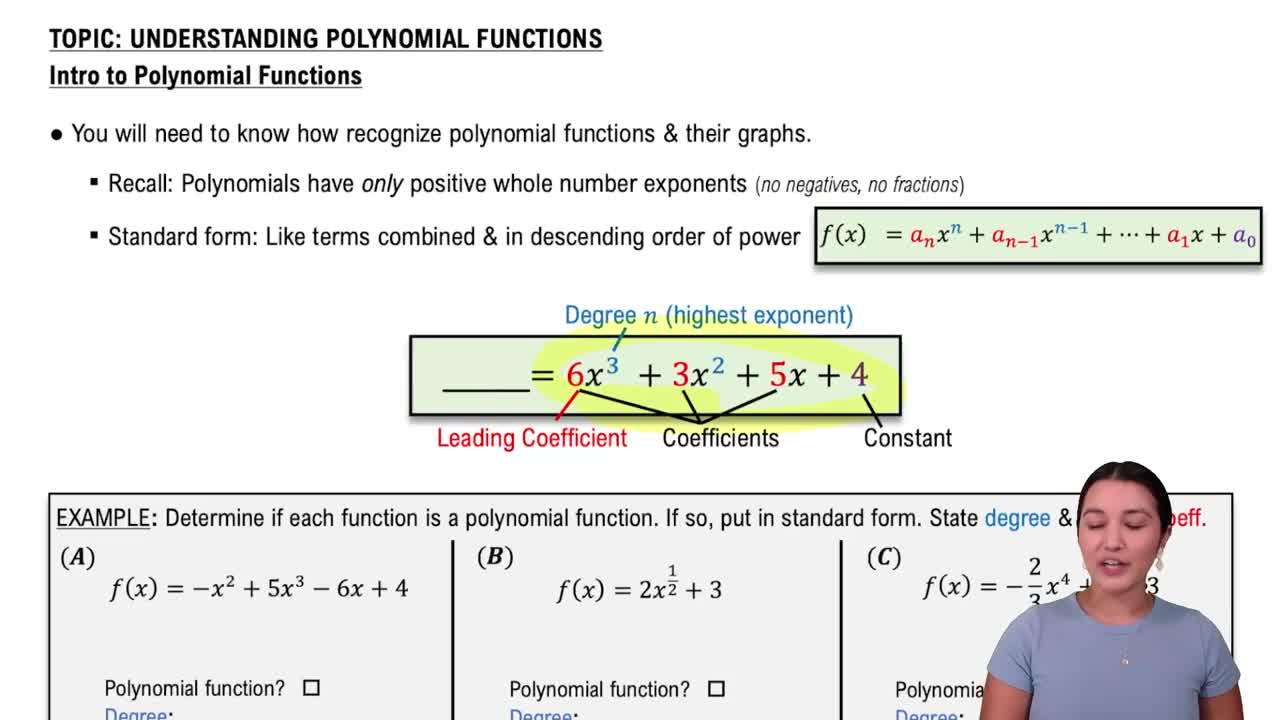Table of contents
- 0. Review of Algebra4h 16m
- 1. Equations & Inequalities3h 18m
- 2. Graphs of Equations43m
- 3. Functions2h 17m
- 4. Polynomial Functions1h 44m
- 5. Rational Functions1h 23m
- 6. Exponential & Logarithmic Functions2h 28m
- 7. Systems of Equations & Matrices4h 6m
- 8. Conic Sections2h 23m
- 9. Sequences, Series, & Induction1h 19m
- 10. Combinatorics & Probability1h 45m
4. Polynomial Functions
Understanding Polynomial Functions
Problem 41a
Textbook Question
Determine the largest open interval of the domain (a) over which the function is increasing and (b) over which it is decreasing. See Example 2. ƒ(x) = x^2 - 4x + 3
 Verified step by step guidance
Verified step by step guidance1
<Step 1: Find the derivative of the function.> Calculate the derivative of the function \( f(x) = x^2 - 4x + 3 \) to find \( f'(x) \).
<Step 2: Set the derivative equal to zero.> Solve \( f'(x) = 0 \) to find the critical points, which are potential points where the function changes from increasing to decreasing or vice versa.
<Step 3: Determine the critical points.> Solve the equation from Step 2 to find the values of \( x \) that are critical points.
<Step 4: Test intervals around the critical points.> Use test points in the intervals determined by the critical points to see where \( f'(x) > 0 \) (function is increasing) and where \( f'(x) < 0 \) (function is decreasing).
<Step 5: Identify the largest open intervals.> Based on the test results, identify the largest open interval where the function is increasing and the largest open interval where it is decreasing.
Recommended similar problem, with video answer:
 Verified Solution
Verified SolutionThis video solution was recommended by our tutors as helpful for the problem above
Video duration:
4mPlay a video:
Was this helpful?
Key Concepts
Here are the essential concepts you must grasp in order to answer the question correctly.
Function Behavior
Understanding how a function behaves involves analyzing its increasing and decreasing intervals. A function is increasing on an interval if, for any two points within that interval, the function's value at the second point is greater than at the first. Conversely, it is decreasing if the function's value at the second point is less than at the first. This behavior is crucial for determining the intervals of increase and decrease.
Recommended video:

End Behavior of Polynomial Functions
Critical Points
Critical points are values of x where the derivative of the function is zero or undefined. These points are essential for identifying where a function changes from increasing to decreasing or vice versa. By finding the critical points of the function, we can analyze the intervals around these points to determine where the function is increasing or decreasing.
Recommended video:
Guided course

Point-Slope Form
First Derivative Test
The First Derivative Test is a method used to determine the nature of critical points. By evaluating the sign of the derivative before and after a critical point, we can conclude whether the function is increasing or decreasing in the intervals surrounding that point. If the derivative changes from positive to negative, the function is increasing before the critical point and decreasing afterward, indicating a local maximum.
Recommended video:
Guided course

Geometric Sequences - General Formula

 6:04m
6:04mWatch next
Master Introduction to Polynomial Functions with a bite sized video explanation from Callie
Start learningRelated Videos
Related Practice


















